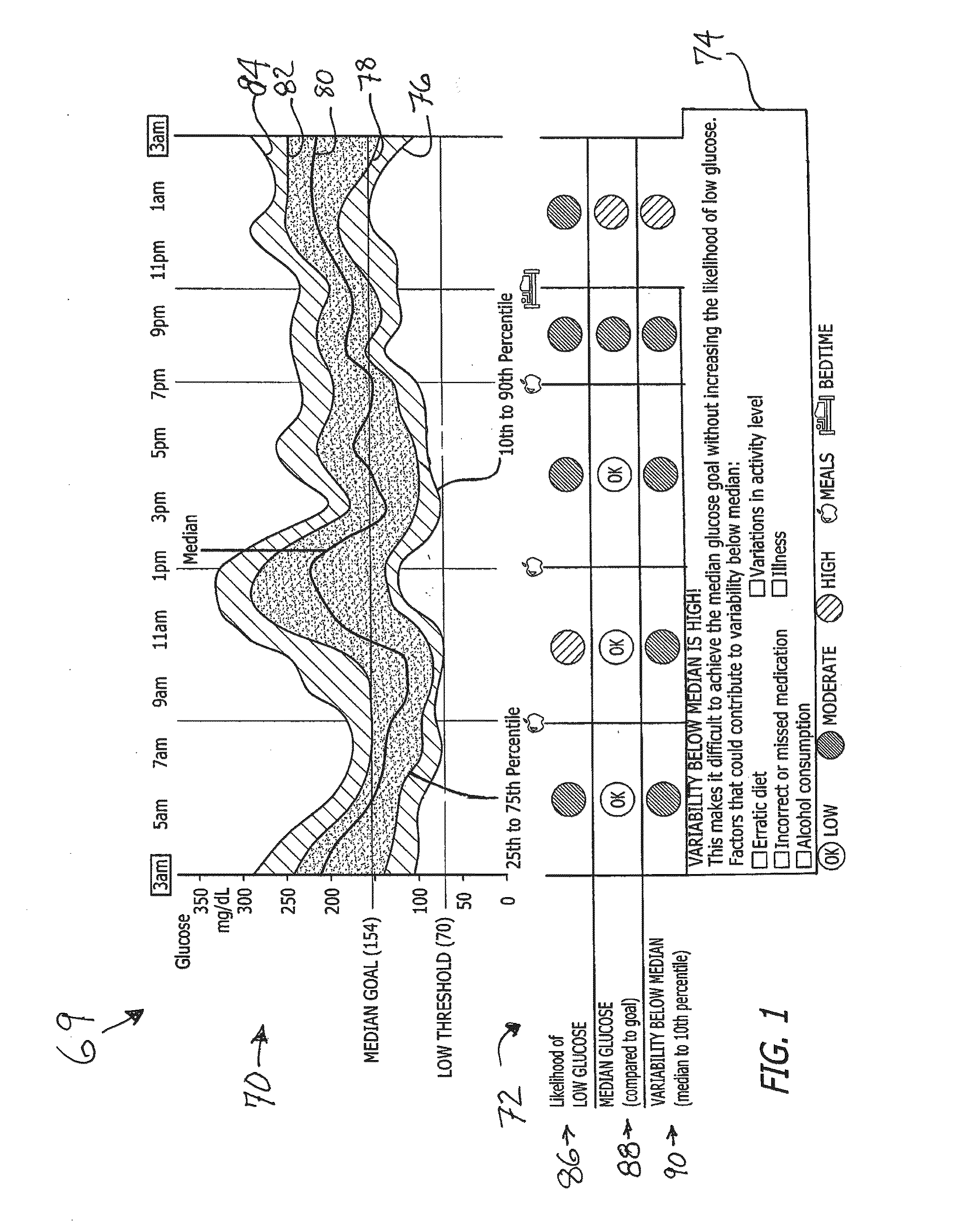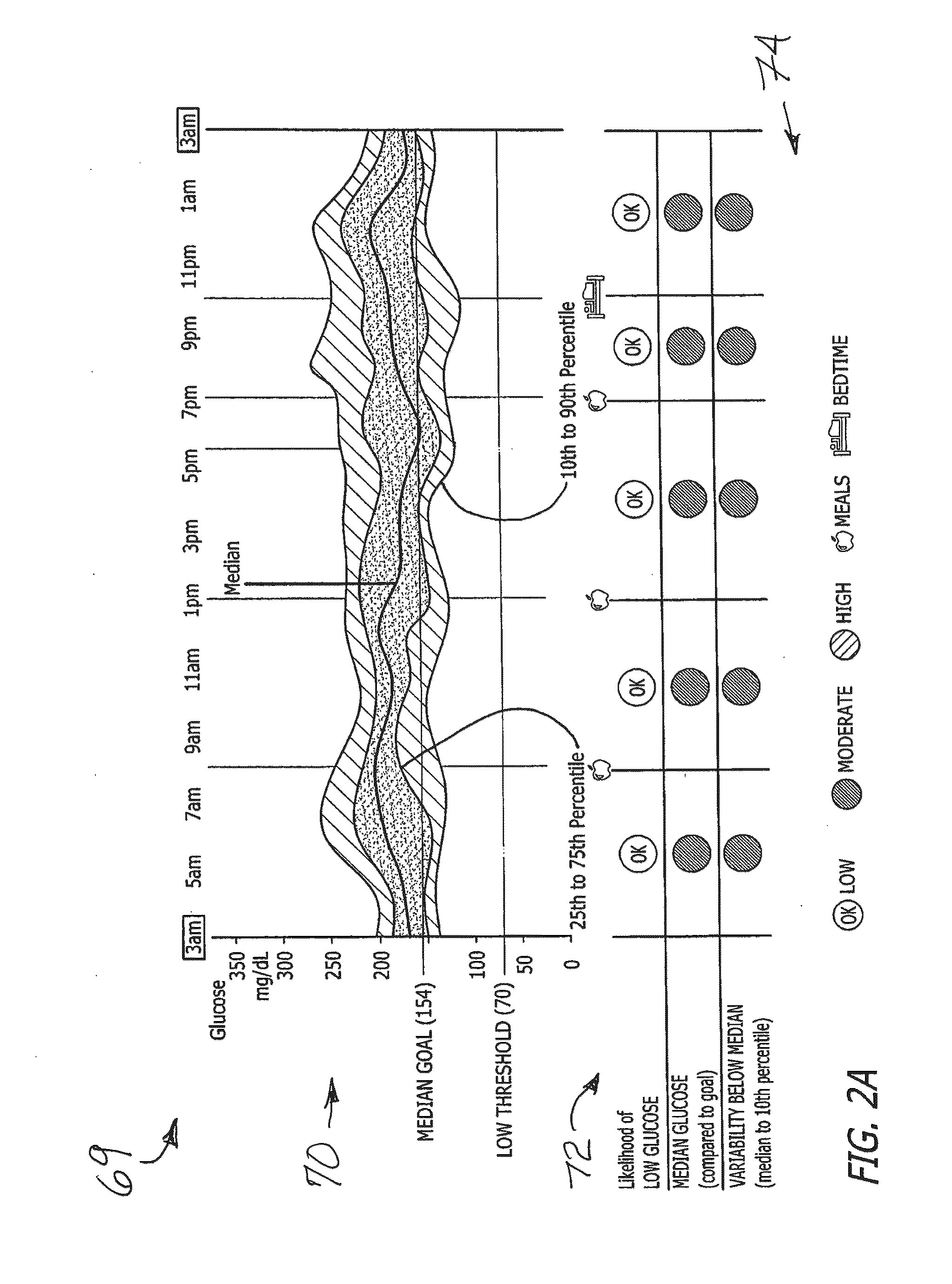System and method to manage diabetes based on glucose median, glucose variability, and hypoglycemic risk
a diabetes and median technology, applied in the field of system and method to manage diabetes based on glucose median, glucose variability, and hypoglycemic risk, can solve the problem that decision-making based on those reports and analyses can still be a challeng
- Summary
- Abstract
- Description
- Claims
- Application Information
AI Technical Summary
Benefits of technology
Problems solved by technology
Method used
Image
Examples
first embodiment
[0206]The advantage of using the MTT is that it not only provides the direction of the titration (increase or decrease) but also amount of the titration, in the form of desired glucose median change. Since the glucose for different diabetes patients responds differently for a given change in insulin dosage, the MTT cannot be used directly to drive titration amount. Another aspect of this invention is that the titration algorithm will learn how a change in insulin affects the median glucose for a specific patient, and will use this measured affect to convert the MTT to a specific insulin change amount. In the first embodiment, the first titration amount may be preset to correspond to a conservative value defined by predetermined patient information such as patient weight or known insulin sensitivity, or it may be defined as a conservative value based on a worse case physiological model of a patient (that is, the most insulin sensitive). For a subsequent titration, the insulin titrati...
second embodiment
[0212]In the second embodiment, estimation of the ITS value for the next titration period is obtained from the moving average of N past computed ITS values:
γ ^ ( k + 1 ) := 1 N ∑ j = k - N k γ ( j ) , ...
second third embodiment
[0214]In the second third embodiment, the estimation of the ITS value for the next titration period is obtained from the projected straight line Least-Squares (LS) Error fit of N past computed ITS values (FIG. 37). In other words, the next insulin dose is calculated by using Eqn. 4, where the next ITS value is determined by the projected LS error fit as illustrated in FIG. 37, and the next MTT is determined by the control grid.
Using MTT to Provide Fixed Step Dose Changes
PUM
| Property | Measurement | Unit |
|---|---|---|
| start time | aaaaa | aaaaa |
| time | aaaaa | aaaaa |
| distance | aaaaa | aaaaa |
Abstract
Description
Claims
Application Information
 Login to View More
Login to View More - R&D
- Intellectual Property
- Life Sciences
- Materials
- Tech Scout
- Unparalleled Data Quality
- Higher Quality Content
- 60% Fewer Hallucinations
Browse by: Latest US Patents, China's latest patents, Technical Efficacy Thesaurus, Application Domain, Technology Topic, Popular Technical Reports.
© 2025 PatSnap. All rights reserved.Legal|Privacy policy|Modern Slavery Act Transparency Statement|Sitemap|About US| Contact US: help@patsnap.com



